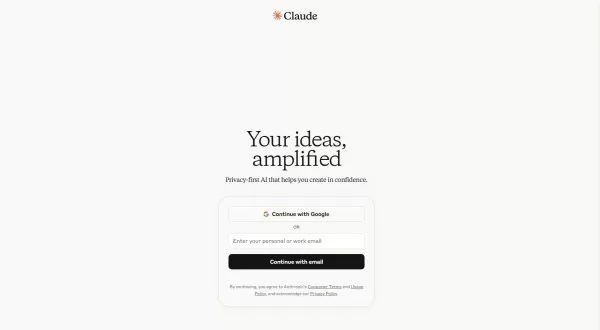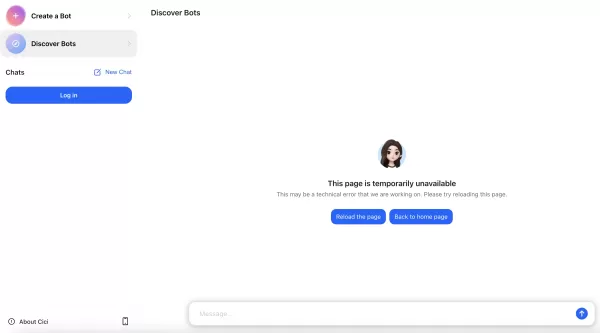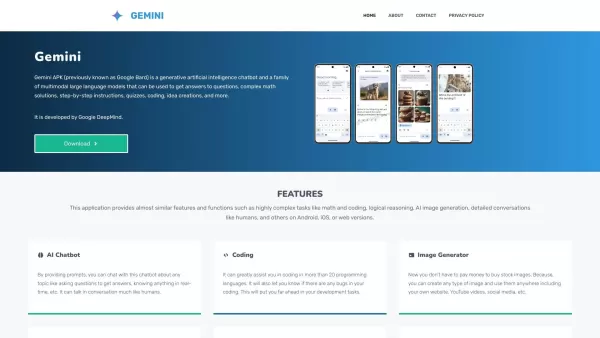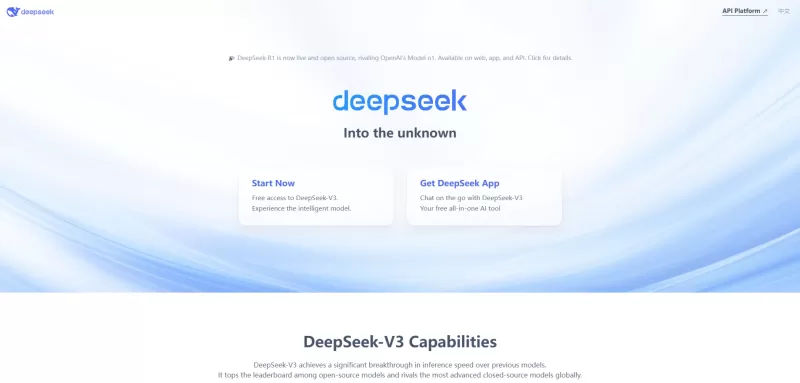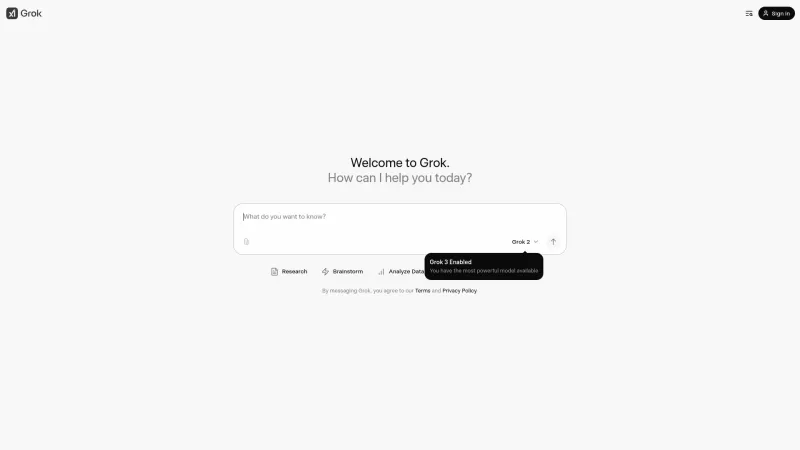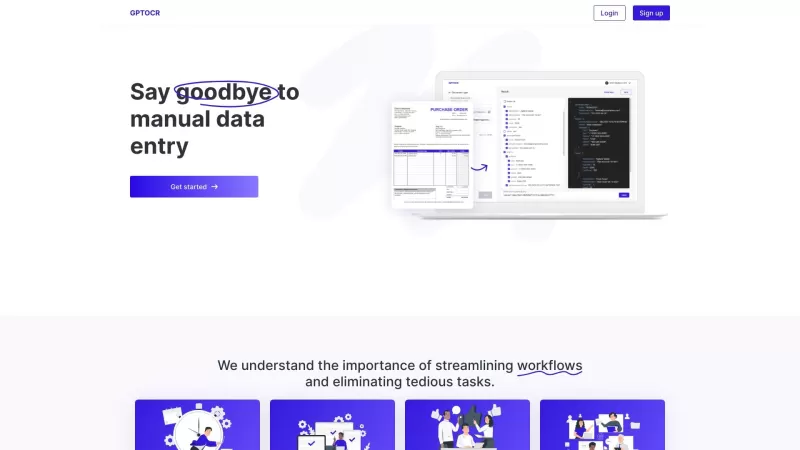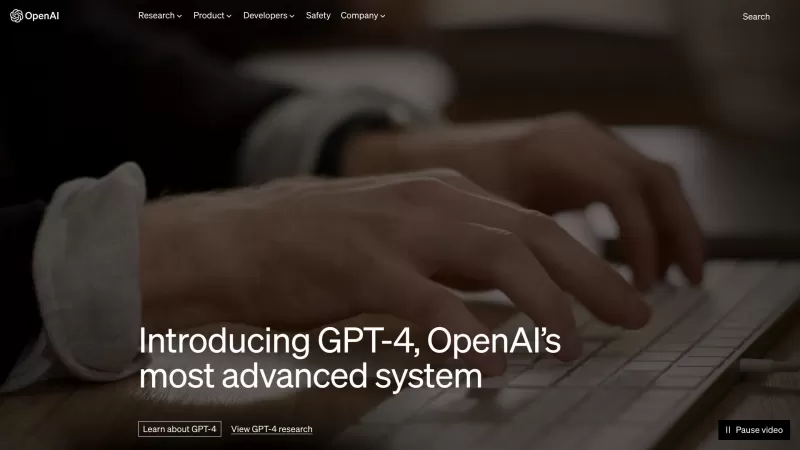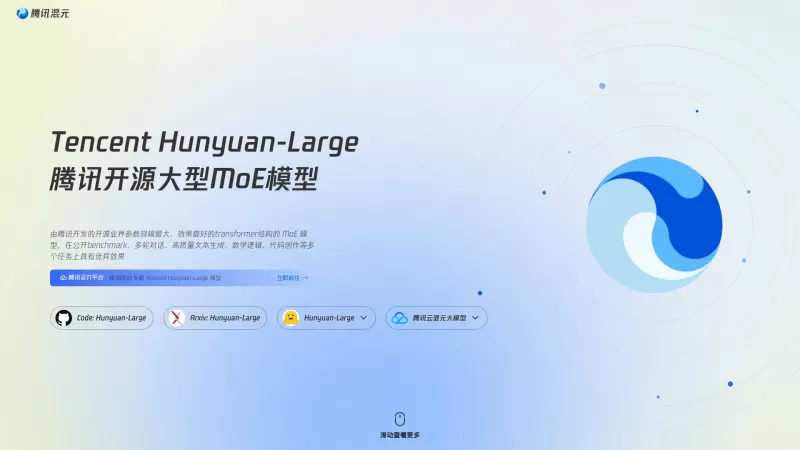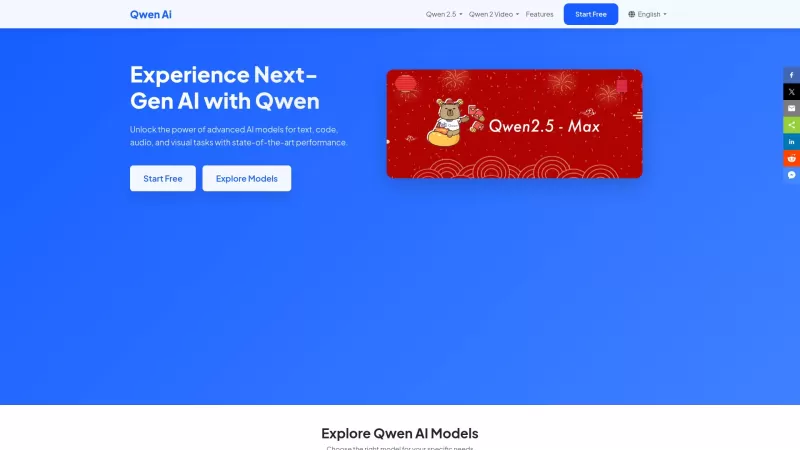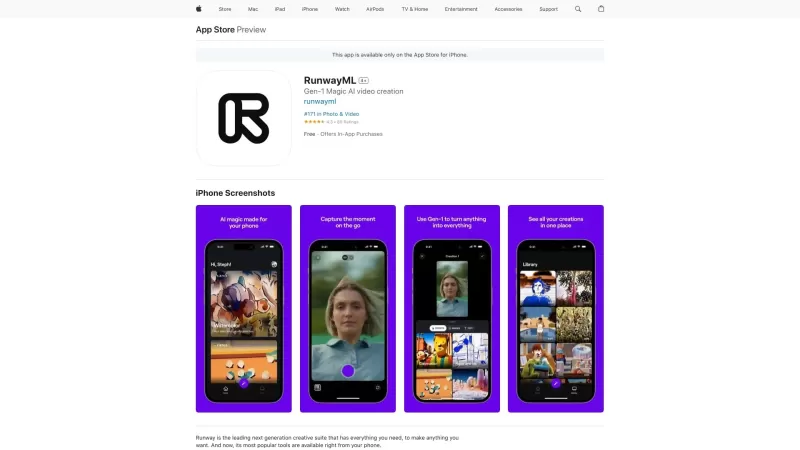AI Turns Images into Captivating Social Media Captions Instantly
The AI Revolution in Social Media: How Image-to-Caption Generators Are Changing Content Creation
In today's fast-paced digital world, where attention spans are shorter than ever, crafting the perfect social media caption can feel like solving a Rubik's Cube blindfolded. But what if your images could write their own captions? Thanks to breakthroughs in Generative AI and Machine Learning, this futuristic concept is now a reality—and it's transforming how brands and creators engage with their audiences.
Why AI-Generated Captions Are a Game-Changer
Gone are the days of staring blankly at a photo, racking your brain for a witty or engaging caption. AI-powered image-to-caption tools analyze visuals and instantly generate relevant, compelling text—saving hours of brainstorming. Here’s why this tech is taking over social media:
✅ Speed & Efficiency – Generate multiple caption options in seconds.
✅ Consistency – Maintain brand voice across all posts.
✅ Accessibility – Make visual content inclusive for visually impaired users.
✅ SEO Boost – AI-generated text improves search rankings.
✅ Engagement Optimization – Algorithms craft captions designed to grab attention.
But how does it actually work? Let’s dive in.
How AI Turns Images Into Captions
The Science Behind Image-to-Text Conversion
AI-powered captioning relies on two key technologies:
- Computer Vision – Identifies objects, people, colors, and scenes in an image.
- Natural Language Processing (NLP) – Translates visual data into human-like text.
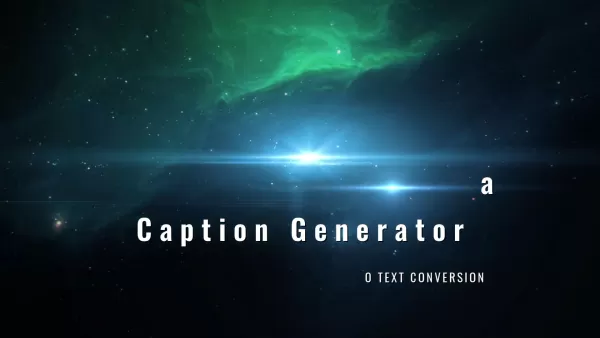
Example: An AI analyzing a beach sunset photo might generate:
✔ "Golden hour at the shore—perfect for relaxation. 🌅 #TravelVibes"
✔ "Sunset views that make every moment magical. ✨"
The Process Step-by-Step
- Image Upload – Feed the AI a high-quality photo.
- Feature Extraction – AI scans for key elements (e.g., faces, objects, scenery).
- Contextual Understanding – Determines mood, setting, and potential hashtags.
- Caption Generation – Produces multiple text options.
- Customization – Edit or refine the output to match your brand voice.
Real-World Applications
1. Social Media Managers – Work Smarter, Not Harder

- Instagram & TikTok – Auto-generate trendy, engaging captions.
- Facebook & LinkedIn – Professional post optimization.
- Pinterest – SEO-friendly pin descriptions.
Example: A bakery posts a cupcake photo. AI suggests:
"Sweet treats that make life delicious! 🧁 Order yours today. #DessertLover"
2. E-Commerce – Boost Product Descriptions
- Auto-generate SEO-optimized listings.
- Highlight key features (e.g., "Soft cotton dress with floral print—perfect for summer! 🌸").
3. Accessibility – Inclusive Content for All
- Screen readers use AI captions to describe images for visually impaired users.
- Essential for compliance with accessibility standards (WCAG).
The Pros & Cons of AI Captioning
Pros Cons ⚡ Saves hours of manual work 🤖 May lack human creativity 📈 Improves engagement rates 🖼️ Requires high-quality images 🌍 Enhances accessibility 🔍 Needs human review for nuance 🔄 Scalable for large volumes ⚠️ Potential bias in training data
How to Get Started
Choosing the Right Tool
Popular options include:
- Canva Magic Write (Beginner-friendly)
- ChatGPT + DALL·E (Advanced customization)
- Adobe Firefly (For creatives)
Best Practices
✔ Use clear, high-res images for better accuracy.
✔ Refine AI output to add personality.
✔ Test different tones (funny, professional, emotional).
The Future of AI in Content Creation
As models like GPT-4 and Gemini evolve, expect:
- Hyper-personalized captions tailored to audience demographics.
- Video-to-caption automation for Reels and YouTube.
- Real-time generation during live streams.
FAQ
Q: Are AI captions detectable?
A: Yes, but polishing them with human edits makes them seamless.
Q: Can AI replace copywriters?
A: Not entirely—human creativity and strategy are still irreplaceable.
Q: Do free tools work well?
A: They’re decent for casual use, but paid tools offer better customization.
Final Thought
AI caption generators aren’t about replacing human creativity—they’re about enhancing it. By automating the grunt work, they free up creators to focus on strategy, storytelling, and genuine audience connection. The question isn’t whether to use AI—it’s how to use it wisely.
🚀 Ready to try it? Upload an image and let AI do the heavy lifting!
Related article
 Master Emerald Kaizo Nuzlocke: Ultimate Survival & Strategy Guide
Emerald Kaizo stands as one of the most formidable Pokémon ROM hacks ever conceived. While attempting a Nuzlocke run exponentially increases the challenge, victory remains achievable through meticulous planning and strategic execution. This definitiv
Master Emerald Kaizo Nuzlocke: Ultimate Survival & Strategy Guide
Emerald Kaizo stands as one of the most formidable Pokémon ROM hacks ever conceived. While attempting a Nuzlocke run exponentially increases the challenge, victory remains achievable through meticulous planning and strategic execution. This definitiv
 AI-Powered Cover Letters: Expert Guide for Journal Submissions
In today's competitive academic publishing environment, crafting an effective cover letter can make the crucial difference in your manuscript's acceptance. Discover how AI-powered tools like ChatGPT can streamline this essential task, helping you cre
AI-Powered Cover Letters: Expert Guide for Journal Submissions
In today's competitive academic publishing environment, crafting an effective cover letter can make the crucial difference in your manuscript's acceptance. Discover how AI-powered tools like ChatGPT can streamline this essential task, helping you cre
 US to Sanction Foreign Officials Over Social Media Regulations
US Takes Stand Against Global Digital Content Regulations
The State Department issued a sharp diplomatic rebuke this week targeting European digital governance policies, signaling escalating tensions over control of online platforms. Secretary Marco
Comments (3)
0/200
US to Sanction Foreign Officials Over Social Media Regulations
US Takes Stand Against Global Digital Content Regulations
The State Department issued a sharp diplomatic rebuke this week targeting European digital governance policies, signaling escalating tensions over control of online platforms. Secretary Marco
Comments (3)
0/200
![CharlesNelson]() CharlesNelson
CharlesNelson
 August 19, 2025 at 5:01:19 AM EDT
August 19, 2025 at 5:01:19 AM EDT
This AI caption generator is a game-changer! 🖼️ No more staring at my photos for hours trying to think of something clever. It’s like having a witty friend who always knows what to say. Can’t wait to see how it handles my goofy pet pics!


 0
0
![BrianWalker]() BrianWalker
BrianWalker
 August 19, 2025 at 3:00:59 AM EDT
August 19, 2025 at 3:00:59 AM EDT
This AI caption generator sounds like a game-changer for social media! 🖼️ I’m curious how it handles tricky images—does it ever miss the vibe?


 0
0
![JeffreyHarris]() JeffreyHarris
JeffreyHarris
 August 10, 2025 at 9:41:49 PM EDT
August 10, 2025 at 9:41:49 PM EDT
This AI caption generator sounds like a game-changer! 🖼️ No more staring at a blank caption box for hours. I wonder how creative these captions really get—can it match my quirky vibe? 🤔


 0
0
The AI Revolution in Social Media: How Image-to-Caption Generators Are Changing Content Creation
In today's fast-paced digital world, where attention spans are shorter than ever, crafting the perfect social media caption can feel like solving a Rubik's Cube blindfolded. But what if your images could write their own captions? Thanks to breakthroughs in Generative AI and Machine Learning, this futuristic concept is now a reality—and it's transforming how brands and creators engage with their audiences.
Why AI-Generated Captions Are a Game-Changer
Gone are the days of staring blankly at a photo, racking your brain for a witty or engaging caption. AI-powered image-to-caption tools analyze visuals and instantly generate relevant, compelling text—saving hours of brainstorming. Here’s why this tech is taking over social media:
✅ Speed & Efficiency – Generate multiple caption options in seconds.
✅ Consistency – Maintain brand voice across all posts.
✅ Accessibility – Make visual content inclusive for visually impaired users.
✅ SEO Boost – AI-generated text improves search rankings.
✅ Engagement Optimization – Algorithms craft captions designed to grab attention.
But how does it actually work? Let’s dive in.
How AI Turns Images Into Captions
The Science Behind Image-to-Text Conversion
AI-powered captioning relies on two key technologies:
- Computer Vision – Identifies objects, people, colors, and scenes in an image.
- Natural Language Processing (NLP) – Translates visual data into human-like text.

Example: An AI analyzing a beach sunset photo might generate:
✔ "Golden hour at the shore—perfect for relaxation. 🌅 #TravelVibes"
✔ "Sunset views that make every moment magical. ✨"
The Process Step-by-Step
- Image Upload – Feed the AI a high-quality photo.
- Feature Extraction – AI scans for key elements (e.g., faces, objects, scenery).
- Contextual Understanding – Determines mood, setting, and potential hashtags.
- Caption Generation – Produces multiple text options.
- Customization – Edit or refine the output to match your brand voice.
Real-World Applications
1. Social Media Managers – Work Smarter, Not Harder

- Instagram & TikTok – Auto-generate trendy, engaging captions.
- Facebook & LinkedIn – Professional post optimization.
- Pinterest – SEO-friendly pin descriptions.
Example: A bakery posts a cupcake photo. AI suggests:
"Sweet treats that make life delicious! 🧁 Order yours today. #DessertLover"
2. E-Commerce – Boost Product Descriptions
- Auto-generate SEO-optimized listings.
- Highlight key features (e.g., "Soft cotton dress with floral print—perfect for summer! 🌸").
3. Accessibility – Inclusive Content for All
- Screen readers use AI captions to describe images for visually impaired users.
- Essential for compliance with accessibility standards (WCAG).
The Pros & Cons of AI Captioning
| Pros | Cons |
|---|---|
| ⚡ Saves hours of manual work | 🤖 May lack human creativity |
| 📈 Improves engagement rates | 🖼️ Requires high-quality images |
| 🌍 Enhances accessibility | 🔍 Needs human review for nuance |
| 🔄 Scalable for large volumes | ⚠️ Potential bias in training data |
How to Get Started
Choosing the Right Tool
Popular options include:
- Canva Magic Write (Beginner-friendly)
- ChatGPT + DALL·E (Advanced customization)
- Adobe Firefly (For creatives)
Best Practices
✔ Use clear, high-res images for better accuracy.
✔ Refine AI output to add personality.
✔ Test different tones (funny, professional, emotional).
The Future of AI in Content Creation
As models like GPT-4 and Gemini evolve, expect:
- Hyper-personalized captions tailored to audience demographics.
- Video-to-caption automation for Reels and YouTube.
- Real-time generation during live streams.
FAQ
Q: Are AI captions detectable?
A: Yes, but polishing them with human edits makes them seamless.
Q: Can AI replace copywriters?
A: Not entirely—human creativity and strategy are still irreplaceable.
Q: Do free tools work well?
A: They’re decent for casual use, but paid tools offer better customization.
Final Thought
AI caption generators aren’t about replacing human creativity—they’re about enhancing it. By automating the grunt work, they free up creators to focus on strategy, storytelling, and genuine audience connection. The question isn’t whether to use AI—it’s how to use it wisely.
🚀 Ready to try it? Upload an image and let AI do the heavy lifting!
 Master Emerald Kaizo Nuzlocke: Ultimate Survival & Strategy Guide
Emerald Kaizo stands as one of the most formidable Pokémon ROM hacks ever conceived. While attempting a Nuzlocke run exponentially increases the challenge, victory remains achievable through meticulous planning and strategic execution. This definitiv
Master Emerald Kaizo Nuzlocke: Ultimate Survival & Strategy Guide
Emerald Kaizo stands as one of the most formidable Pokémon ROM hacks ever conceived. While attempting a Nuzlocke run exponentially increases the challenge, victory remains achievable through meticulous planning and strategic execution. This definitiv
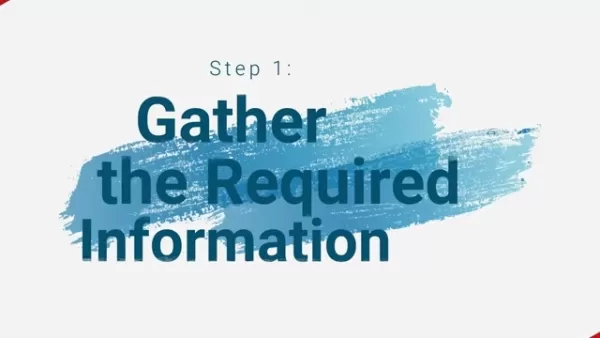 AI-Powered Cover Letters: Expert Guide for Journal Submissions
In today's competitive academic publishing environment, crafting an effective cover letter can make the crucial difference in your manuscript's acceptance. Discover how AI-powered tools like ChatGPT can streamline this essential task, helping you cre
AI-Powered Cover Letters: Expert Guide for Journal Submissions
In today's competitive academic publishing environment, crafting an effective cover letter can make the crucial difference in your manuscript's acceptance. Discover how AI-powered tools like ChatGPT can streamline this essential task, helping you cre
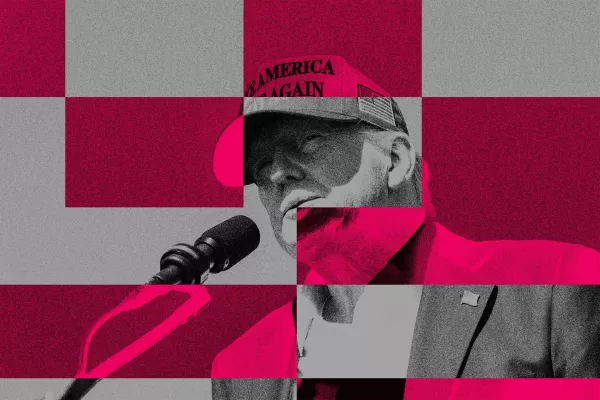 US to Sanction Foreign Officials Over Social Media Regulations
US Takes Stand Against Global Digital Content Regulations
The State Department issued a sharp diplomatic rebuke this week targeting European digital governance policies, signaling escalating tensions over control of online platforms. Secretary Marco
US to Sanction Foreign Officials Over Social Media Regulations
US Takes Stand Against Global Digital Content Regulations
The State Department issued a sharp diplomatic rebuke this week targeting European digital governance policies, signaling escalating tensions over control of online platforms. Secretary Marco
 August 19, 2025 at 5:01:19 AM EDT
August 19, 2025 at 5:01:19 AM EDT
This AI caption generator is a game-changer! 🖼️ No more staring at my photos for hours trying to think of something clever. It’s like having a witty friend who always knows what to say. Can’t wait to see how it handles my goofy pet pics!


 0
0
 August 19, 2025 at 3:00:59 AM EDT
August 19, 2025 at 3:00:59 AM EDT
This AI caption generator sounds like a game-changer for social media! 🖼️ I’m curious how it handles tricky images—does it ever miss the vibe?


 0
0
 August 10, 2025 at 9:41:49 PM EDT
August 10, 2025 at 9:41:49 PM EDT
This AI caption generator sounds like a game-changer! 🖼️ No more staring at a blank caption box for hours. I wonder how creative these captions really get—can it match my quirky vibe? 🤔


 0
0
